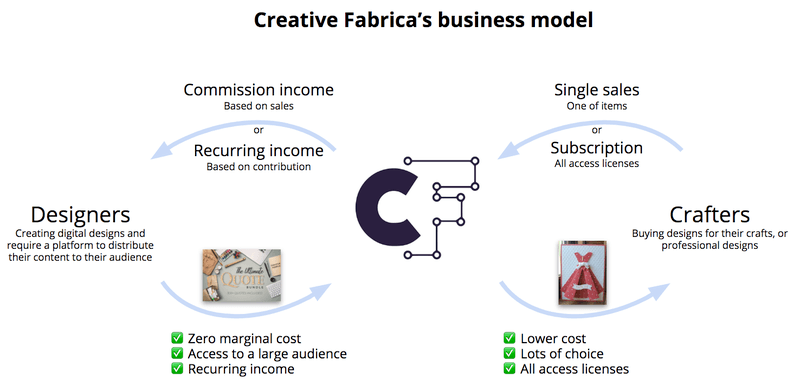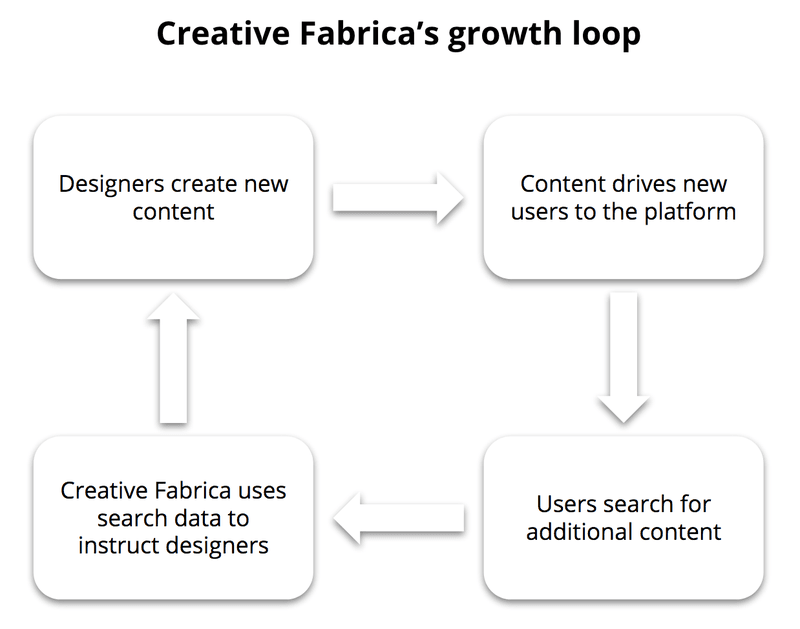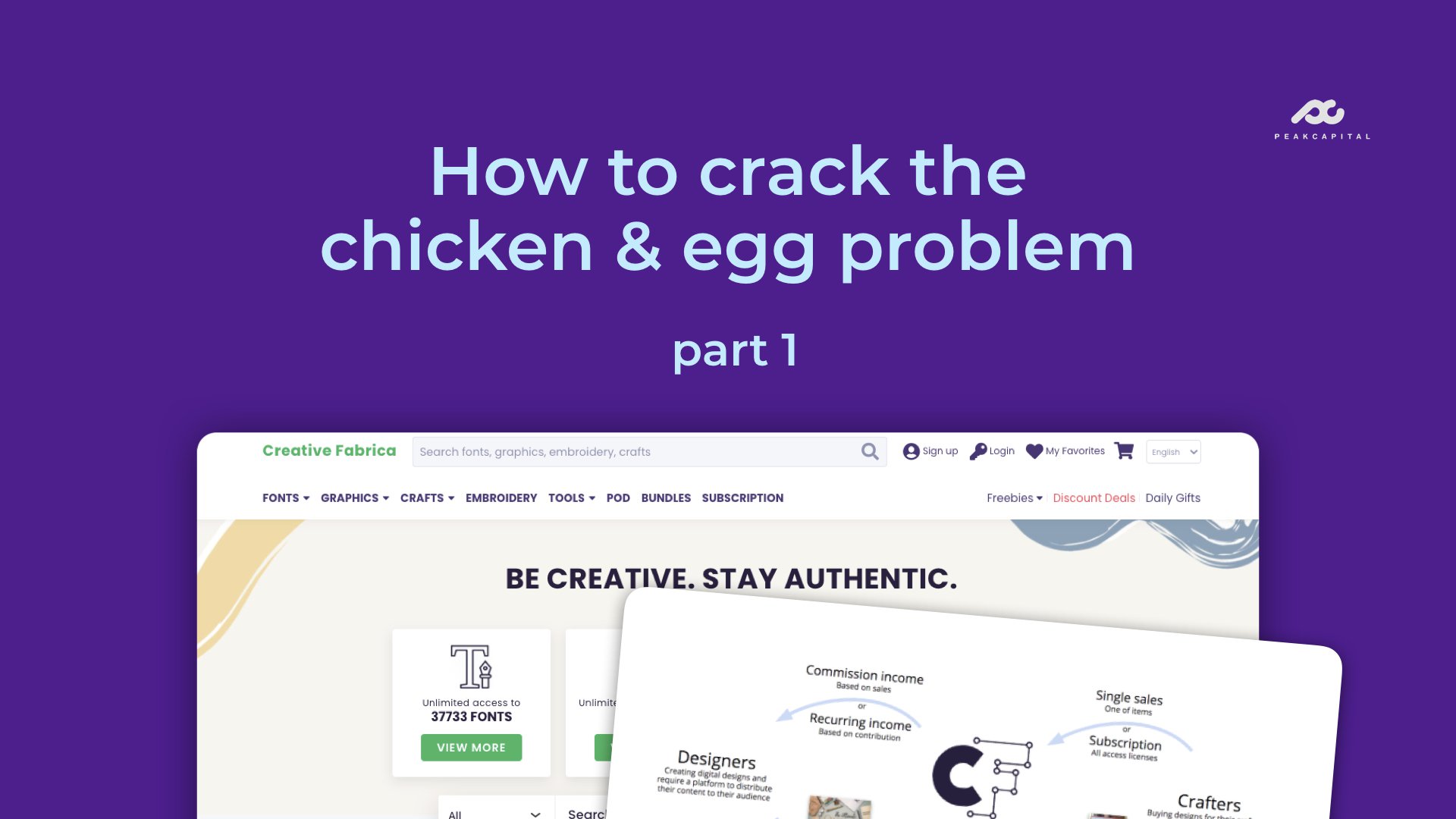A marketplace at scale is one of the most beautiful businesses to see in action. There are so many options to scale your marketplace. You can use the marketplace’s virality for growth, leverage the marketplace network effects to improve your service (which btw are NOT the same), and convince investors with your proven business model to raise funding to scale even faster. However, reaching that scale is difficult; founders must tackle different challenges along the road depending on state of maturity, market, and more.
One of the first challenges most marketplace founders face is the chicken and egg problem. (If not obvious from the name alone) The problem is related to the infamous question, “what comes first: the chicken or the egg?” This question is infamous for its perplexity – it is a paradox without an escape, wherein cause and effect are indistinguishable. But, let’s leave that to the philosophers…
Marketplace founders encounter the chicken-and-egg problem when launching their marketplace. To provide your service you need a sufficient amount of supply and demand. But how can you reach this amount while you don’t have either supply or demand? Why would buyers come to a marketplace where there is nothing to buy, and why would suppliers join a marketplace with no one to buy from them? …What comes first?
Spoiler alert: It’s all about committing to one side of your marketplace first. But, that is easier said than done…
Luckily many founders succeeded in solving the chicken and egg problem. There are plenty of articles written on how to kickstart, hack, and, hustle your way through the first barrier; the best of which provides high-level theories backed by practical examples of building successful marketplaces such as Airbnb, Uber, or Etsy (two of my favorites: How to Kickstart and Scale a Marketplace Business and The Hierarchy of Marketplaces).
These stories made me wonder: how did our marketplace founders solve the chicken and egg problem – and, what can we learn from them? So I sat down with several of our marketplace founders and decided to share the learnings in a series of blog posts.
First up in the series: Creative Fabrica
Creative Fabrica – Pitching to designers, an inclusive business model, and experimenting with freebies.
The company: Creative Fabrica is a marketplace for crafters to find digital fonts, graphics, and art to create digital or physical products. The community of crafters, both hobbyists and professionals alike, can buy these as one-offs or through an all-access subscription. On the supply side, Creative Fabrica enables high quality designers to distribute their digital designs to the creative community at large.
Before Creative Fabrica, digital designs were either expensive, difficult to find, or of poor quality. While there were (and are) many designers creating quality content, the ability to reach their audience was limited. Hence, Creative Fabrica started offering a solution to designers to sell to a large audience while lowering the prices for quality content to consumers. A clear win-win.
🐣Their challenge: How to convince designers to list their items on their website when there is no traffic?
👞#1 Kickstarting supply by pitching directly to top designers
Creative Fabrica started by personally convincing designers to list their content on Creative Fabrica’s website. While this strategy is not scalable in the long run, it is super effective to get the first supply. The founders, Roemie and Anca had a previous company in the same industry before. By leveraging their existing network, they were able to get the first enthusiastic designers in a specific vertical on their platform. They’ve set a target of x listed items and x active designers before going live.
💸#2 An inclusive business model based on contribution to supply
While the first designers could be convinced purely on the belief in Creative Fabrica’s mission, convincing the next wave of designers was not so easy. With no prior relationship, belief in the mission alone was insufficient to lock-in the next wave of supply.
So, Creative Fabrica introduced a new business model to prove to designers that they can make money on the platform: an inclusive revenue model. Instead of being paid for the amount of designs that you sell (the traditional marketplace model), Creative Fabrica paid designers for every contribution in content to the platform. Meaning that although no one downloaded your design you still got paid a portion of the revenue because you uploaded a design. The inclusive revenue model created a recurring income for designers and incentivized them to upload their content on the platform.

🎉#3 Creating demand by giving away free content – introducing freebies
Since Creative Fabrica is a marketplace for digital assets, the marginal cost to distribute these assets (once they have been uploaded) is close to zero. This allowed Creative Fabrica to experiment with large discounts or even giving the content away for free. The free content attracted many non-paying customers of which a portion could be converted to paid recurring users. Obviously this is particular advantage that applies only to marketplaces (or other businesses) with zero-to-low marginal costs per item (e.g. have a look at Udemy, not a day goes by without discounts). However, the idea of generating a lot of value for your customers for free which drives top-level growth can be applied to many industries.
💎#4 Using data to create relevant content for their audience
(Although this strategy came about after the chicken and egg phase, we considered it to be too interesting not to mention). Once a marketplace reaches scale, data becomes more and more relevant. Creative Fabrica is in a unique position to know what their audience wants. By researching consumer demand, Creative Fabrica is able to guide designers to create specific content for their audience. This enables designers to match their creativity with topics that resonate with their audience. Thereby improving content quality and lowers production cost. A strong network effect!

Our main takeaways:
1. Do non-scalable things to kickstart your marketplace’s supply.
An effective non-scalable approach is better than a non-effective scalable approach – obviously. So don’t be scared to do non-scalable, time-consuming things that don’t scale to acquire your first customers. It is often required for the first steps. You’ll figure out how to scale your operations at a later stage.
2. Focus on quality and engagement before scale.
Creative Fabrica focused on high-quality designers that engaged with the platform. That way both designers and users had a good experience which made them recurring users. We often see companies focus on scaling too early without ensuring the quality and engagement of their first users.
3. Your business model has to match with the value that you create.
Creative Fabrica did a great job by thinking out of the box with its business model. Rather than choosing a standard commission-based model on the transaction price, they thought about the optimal model for their users.
4. Free content can be a great growth driver if your marketplace has a high rate of repeat buys.
Marketplaces with low marginal cost and a high rate of repeat buys (or a subscription model) can benefit a lot by bringing customers a lot of value without expecting a return right away. Freebies can help grow the top of your funnel. Compare it to free-trails or freemium model strategies that are known and loved by SaaS companies.
Enjoyed the article about Creative Fabrica? They are growing quickly and continuously looking for people to join them on their crafting journey. Have a look here!
Next up in the series will be Studocu!
